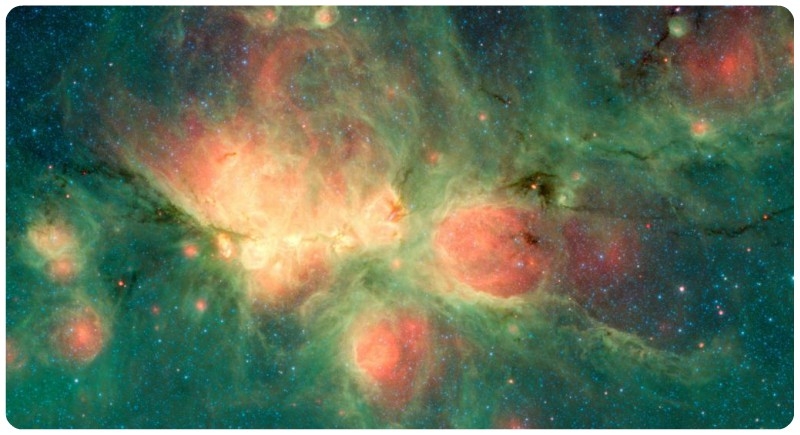Magical beauty of space covered under pallete of black and white
Mumbai, October 25: Sometimes nature shows us something that we have even never imagined. In these brighty cities we don’t admire much the world beyond the earth but whenever we are in villages, we feel that lets have a look at the sky in the night time and just keep on looking at the stars, moon etc. usually the colors we see are white and black but the sky has number of colors hidden under its curtain. This can be seen by this image.

Initailly by looking at the image one might feel that it is nothing but created by the hands and computers but these are the orange colored pebbles nature has scattered in the sky.
This image from NASA's Spitzer Space Telescope shows the Cat's Paw Nebula, so named for the large, round features that create the impression of a feline footprint. The nebula is a star-forming region in the Milky Way galaxy, located in the constellation Scorpius. Estimates of its distance from Earth range from about 4,200 to about 5,500 light-years.
Framed by green clouds, the bright red bubbles are the dominant feature in the image, which was created using data from two of Spitzer's instruments. After gas and dust inside the nebula collapse to form stars, the stars may in turn heat up the pressurized gas surrounding them, causing it to expand into space and create bubbles.
The green areas show places where radiation from hot stars collided with large molecules called "polycyclic aromatic hydrocarbons," causing them to fluoresce.
Spitzer is an infrared telescope, and infrared light is useful to astronomers because it can penetrate thick clouds of gas and dust better than optical light (the kind visible to the human eye). The black filaments running horizontally through the nebula are regions of gas and dust so dense, not even infrared light can pass through them. These dense regions may soon be sites where another generation of stars will form.
The Cat's Paw star-forming region is estimated to be between 24 and 27 parsecs (80 and 90 light years) across. It extends beyond the left side of these images and intersects with a similar-sized star-forming region, NGC 6357. That region is also known as the Lobster Nebula – an unlikely companion for a cat